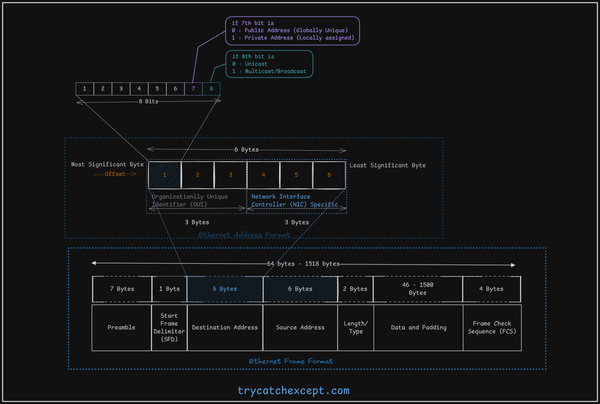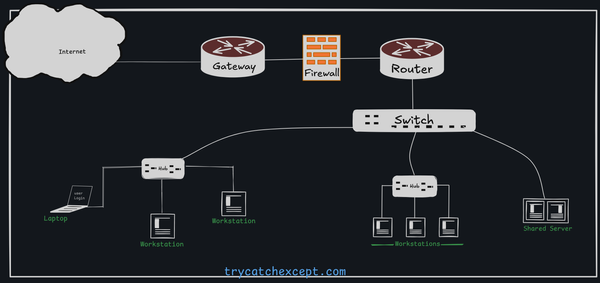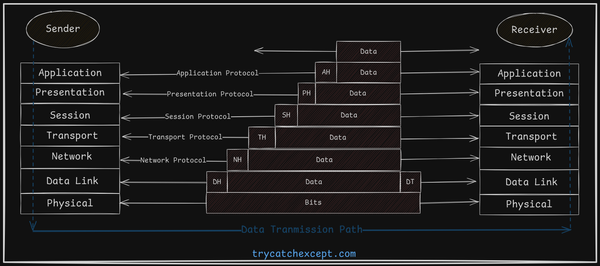TCP/IP Model: The Backbone of Internet Connectivity
TCP/IP Model, ARPANET, Data encapsulation, Data de-capsulation, Peer to peer communication
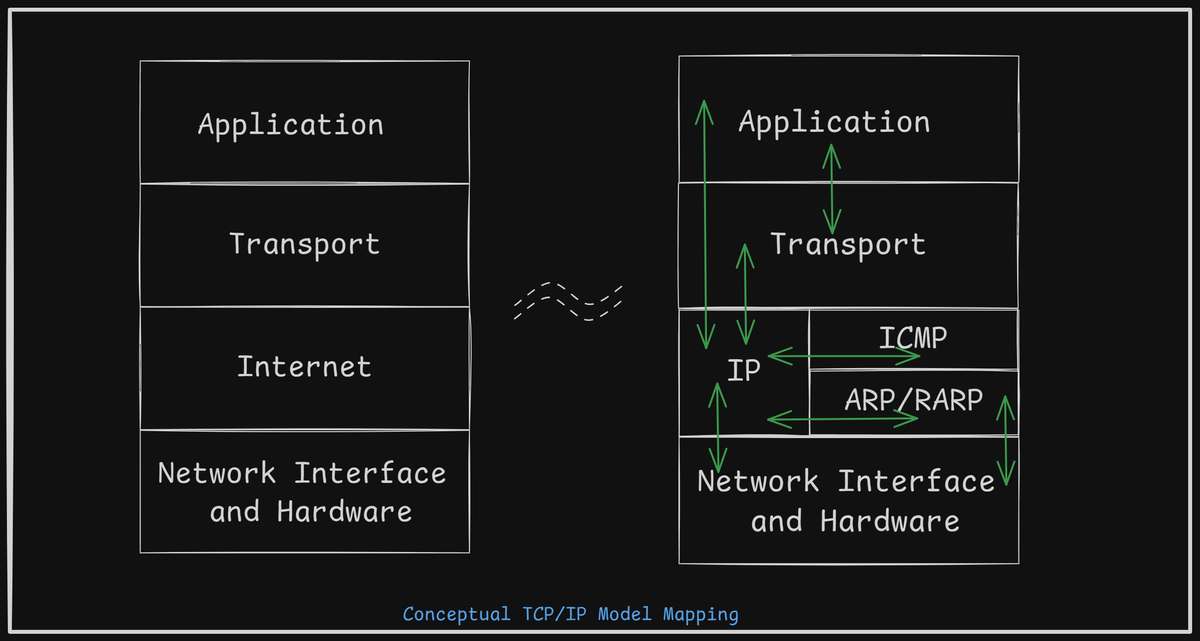
The TCP/IP model is the fundamental framework that enables reliable communication across the internet and various networks. As the backbone of modern networking, TCP/IP defines how data should be packaged, addressed, transmitted, routed, and received between different devices—whether they're computers, servers, or embedded systems. Embedded engineers, network administrators, and developers alike rely on this protocol suite to ensure smooth data transmission, from web browsing and file transfers to more complex tasks like remote device configuration and real-time data processing. In this article, we’ll take a closer look at the TCP/IP model, exploring its layers, how it manages data flow, and why it's critical to nearly every application of internet connectivity.
History of ARPANET
In the early days of computer networks, the goal was to allow users to share resources across multiple systems. During this time, the U.S. Department of Defense needed a way to connect computers across their military bases in a way that would still work even during a nuclear war. To solve this, the Advanced Research Projects Agency (ARPA) funded a project to create software that could link different computer networks together over regular telephone lines, even if they used different internal software. This effort led to the creation of ARPANET, one of the first major networks.
ARPANET used special processors called Interface Message Processors (IMPs) and point-to-point connections to link different computers. The main benefit of ARPANET was that it allowed researchers in one network to access resources, like supercomputers, on another network.
ARPANET was one of the first large networks to use packet-switching technology, which breaks data into smaller packets that are then sent across the network. In addition to research, it allowed users to exchange files, send emails, and log into remote systems.
However, as ARPANET grew, new networking technologies like Ethernet and Token Ring started emerging. These technologies used different hardware and software to connect computers, making it difficult to connect different types of networks. To solve this, there needed to be software that could sit on top of these technologies and enable communication between them, regardless of the specific network setup.
The main challenge was to create software that could move information from one host to another, even if they were using incompatible network technologies. The solution developed for ARPANET laid the foundation for how we connect and communicate across different networks today.
The TCP / IP Internet Layering Model
The TCP/IP Internet Layering Model is a simplified way to organize how data is transferred over the internet, divided into layers. Each layer has a specific role in handling data communication, from the user's computer to another machine.
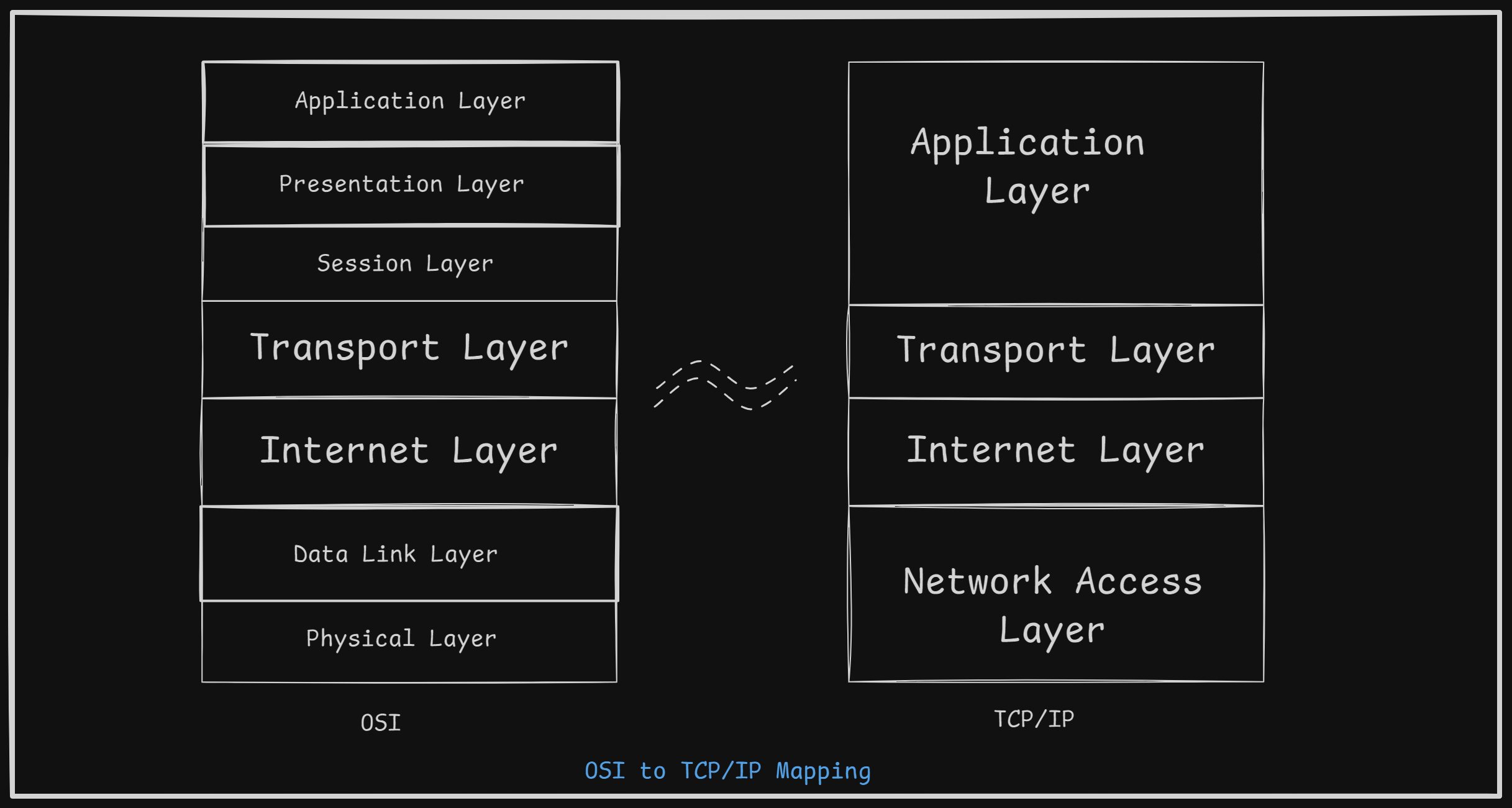
-
Application Layer: This is where users interact with the internet using applications like web browsers. The application uses a protocol to format the data for transmission and ensures a session is in place to send it to the next layer.
-
Transport Layer: This layer manages communication between application programs, ensuring data is sent reliably. It breaks the data into smaller chunks, tracks it using port numbers, and makes sure it reaches the destination without errors.
-
Internet Layer: Here, the data is packed into IP datagrams, which are like labeled envelopes with addresses. It figures out the best path for the data to travel and sends it to the right network or router.
-
Network Access Layer: This final layer handles the actual transmission of the data over the network. It prepares the data for physical transfer, using protocols like Ethernet to send it to the correct destination.
-
Physical Layer:
Layers of TCP / IP Model
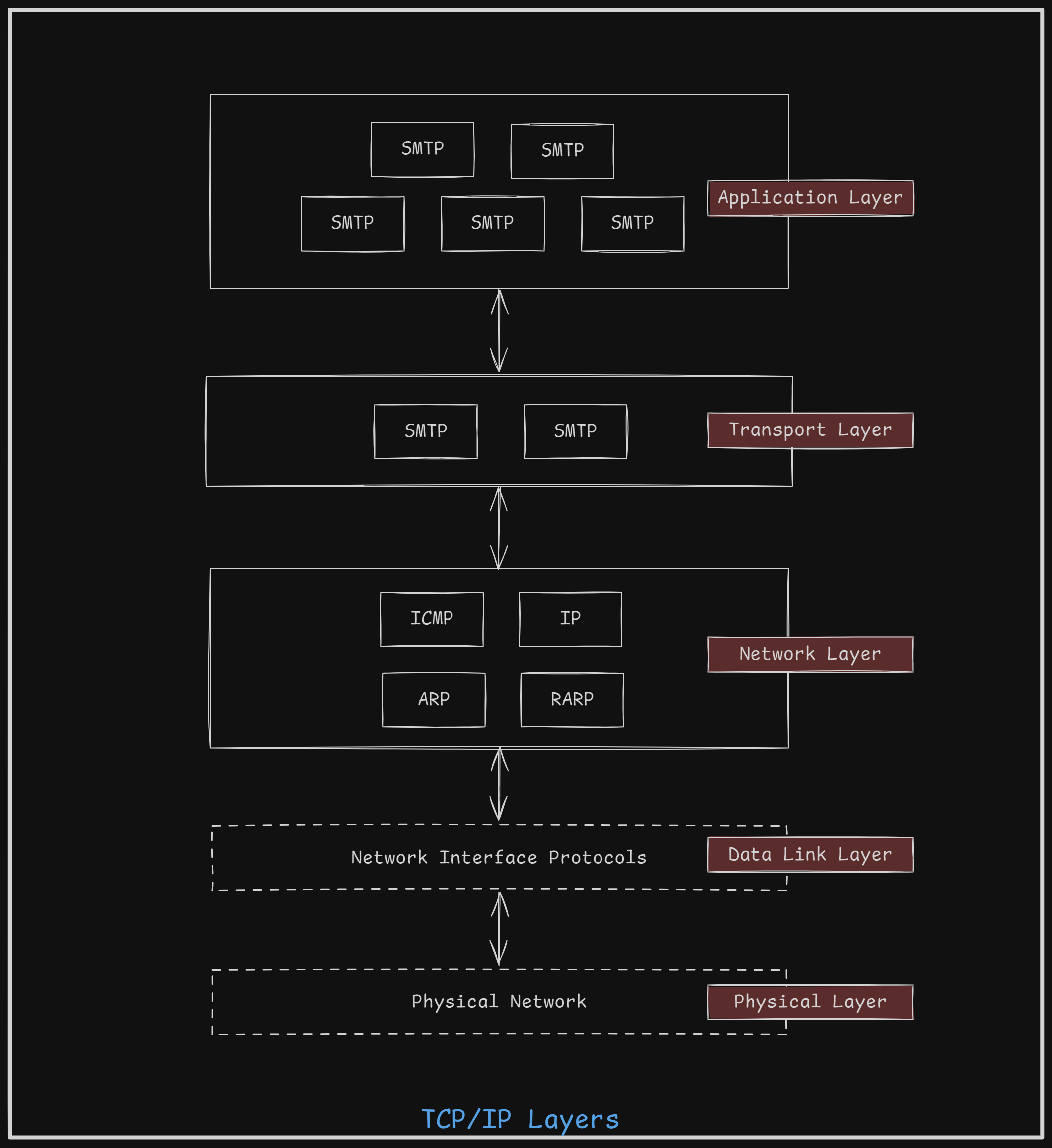
- The Physical Layer in TCP/IP uses existing protocols to move data between computers.
- Data travels through layers, with each layer adding information (
encapsulation) on the sending side. - The receiving side reverses this process (
de-capsulation) to retrieve the original data. - Transport layer uses a 16-bit port number to identify the specific application.
- Network layer uses a 32-bit internet address to locate the correct computer.
- The data link layer converts the network address to a physical address for transmission.
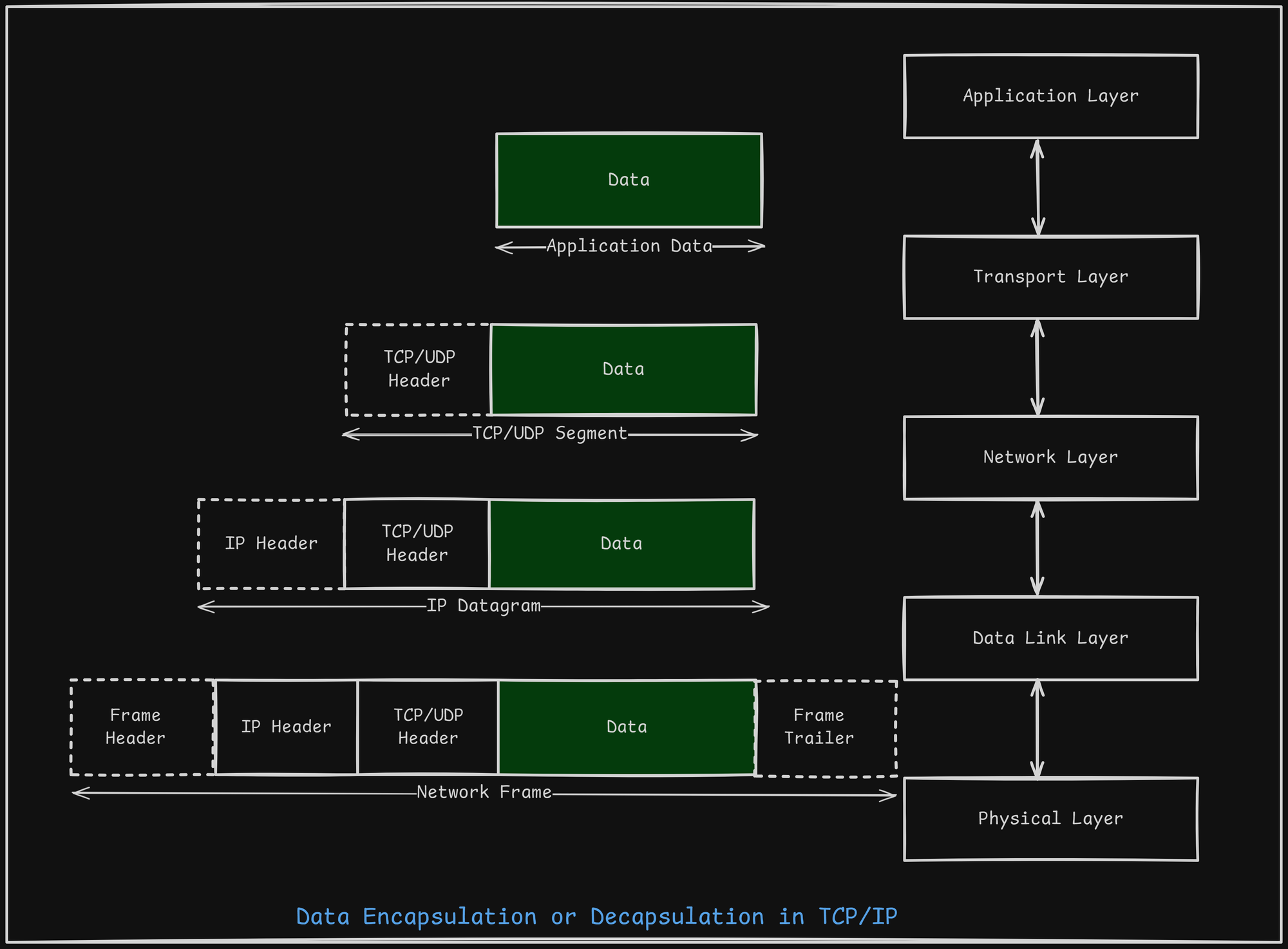
Peer to peer communication
In simple terms, peer-to-peer communication happens when data flows from one system to another. Here's how it works:
- The information, called a Protocol Data Unit (PDU), moves down through layers of the sender's system (like different levels in a building).
- At the lowest layer (the physical layer), the data travels over the communication cables to the receiving system.
- When the receiving system gets the data, it moves back up through its layers, and this data is called a Service Data Unit (SDU).
- The layers in the system are connected by Interfaces, and Service Primitives are the tools that move data between layers.
- Each layer has a specific destination, called a Service Access Point (SAP), where the data is delivered. For example, SAPs could be fields in network protocols like MAC, IP, or TCP/UDP.
Basically, it's like sending a package down through floors in one building, across a wire, and up through floors in another building.
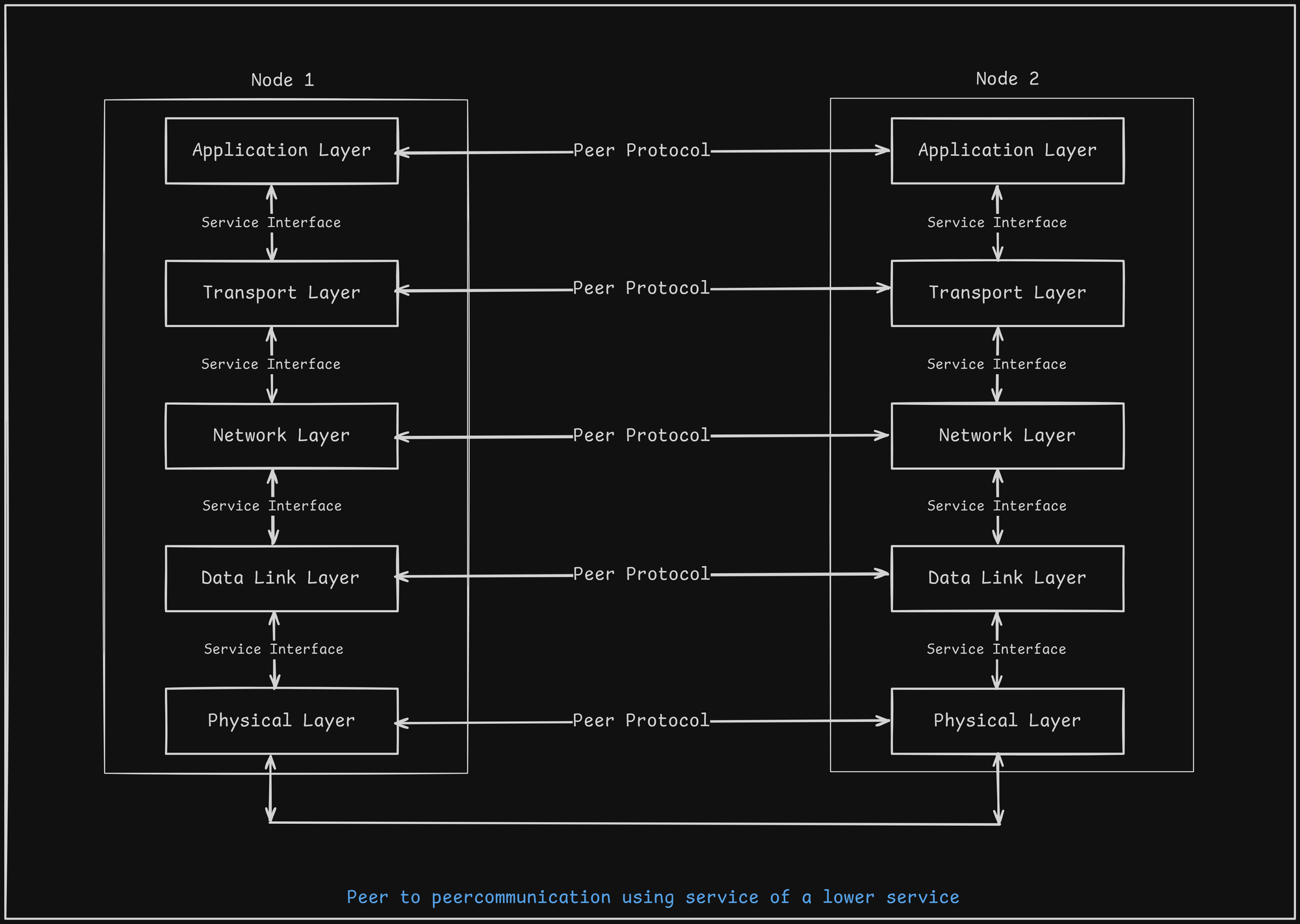
Takeaways
The TCP/IP model is a simplified 4-layer structure that focuses on real-world internet communication, unlike the more complex 7-layer OSI model. While the OSI model includes distinct presentation and session layers, TCP/IP combines these into the application layer. TCP/IP layers include Application, Transport, Internet, and Network Access. In peer-to-peer communication, data flows down the layers of the sender, is transmitted via the physical layer, and flows up the layers of the receiver. Each layer has specific roles, using Service Access Points (SAPs) to manage data transfer between systems.
